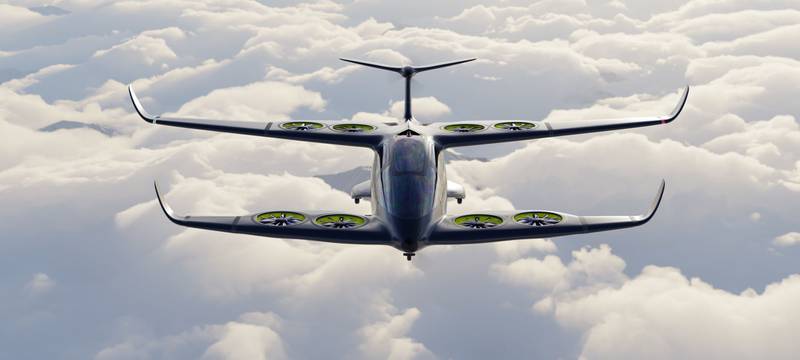French start-up Ascendance unveils hybrid-electric aircraft design, eyes 2025 production

French aviation start-up Ascendance Flight Technologies has unveiled the design of the Atea, its five-seater vertical take-off and landing (VTOL) aircraft, in a push to accelerate the transition towards green aviation.
Production and certification of the VTOL aircraft, designed to reduce carbon emissions by 80 per cent and divide noise pollution by four, is scheduled for 2025.
The aircraft will come in a full-scale prototype and will go into a testing phase in 2023, Jean-Christophe Lambert, co-founder and chief executive of Ascendance, said.
Atea was conceived after three years of research and development, and is designed to operate in peri-urban areas – zones that transition from rural to urban land uses – and within regions with a range of 400 kilometres.
“The aircraft is the result of huge efforts by our R&D department, tests and trials on four prototypes and a great deal of thought on costs and the ease of flying such an aircraft. Its characteristics provide all the performances expected by a sector that the ongoing transition has made more demanding," Mr Lambert said.
Hybrid-electric aircraft use battery-powered electric powertrains, similar to what Tesla uses in its vehicles. There is consistent increase in the electrification of aircraft systems, research on electrical propulsion and investments in electric or hybrid aircraft designs, according to the International Civil Aviation Organisation (Icao).
Icao has identified ongoing projects around the world, ranging from general aviation or recreational aircraft, business and regional aircraft, large commercial aircraft, and VTOL aircraft, which are also called electric urban air-taxis.
"Significant progress" has been made in the VTOL category in recent years, with seat capacities having increased from one to five, maximum take-off weights now between 450kg and 2,200kg, and projected flight ranges from 16km to 300km, it said.
Most of these projects are expected to enter service between 2020 and 2030, with some already commercially available. Four projects made their first flights in 2019, including the Lilium, CityAirbus, Boeing Aurora eVTOL and Bye Aerospace Sun Flyer 2, Icao said.
In September, the CityAirbus' modified design was revealed. The European aircraft manufacturer aims to fly a prototype in 2023 and expects certification to come by 2025.
Getting these aircraft into service can significantly contribute to climate change goals. Engineers from the Massachusetts Institute of Technology, after coming up with a propulsion concept earlier this year, estimate the technology would eliminate 95 per cent of the aviation industry's nitrogen oxide emissions, thereby reducing the number of associated early deaths by 92 per cent.
Atea's configuration has a patented integrated hybrid system called Sterna, devised on an electric engine powered by the merging of two energy sources: combustion and electric (battery). Ascendance is planning to phase out the combustion energy source and replace it with new sources of cleaner energy, such as hydrogen or sustainable aviation fuel.
Meeting the goal of net zero carbon emissions by 2050 is a challenge for the aviation industry, but it also offers a huge opportunity for the sustainable aviation fuel sector, an Energy Intelligence Forum conference recently said.
Ascendance's patented rotor technology allows increased power during take-off and landing phases, besides significant noise reduction. The number of Atea's rotors also guarantee manoeuvrability in case of failure.
Its lift and cruise system, meanwhile, provides separation of vertical and horizontal flight, which are ensured by the rotors for the former and by propellers located in the nose and tailfin for the latter. The resulting absence of pivoting mechanisms therefore reduces risk of failure, which also simplifies the aircraft’s certification while improving overall aircraft safety.
“With help from our financial partners, we are now experiencing vigorous development. We are actively recruiting, running a test and trial programme and we are steadily moving towards our 2025 certification objective," Mr Lambert said.
